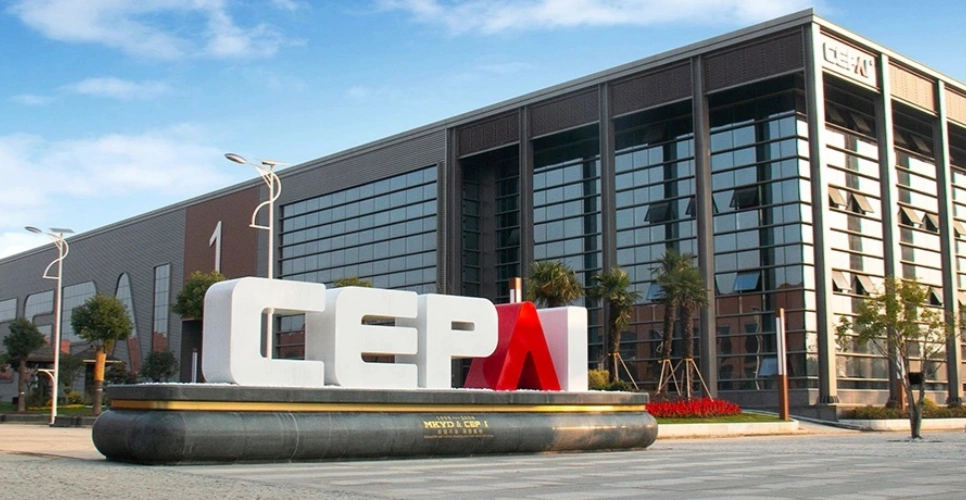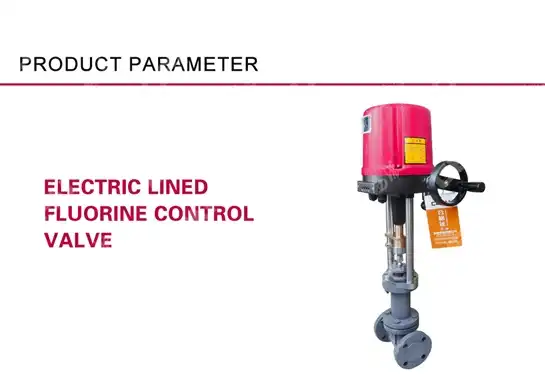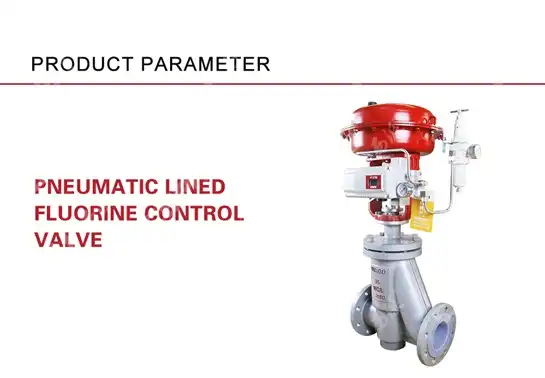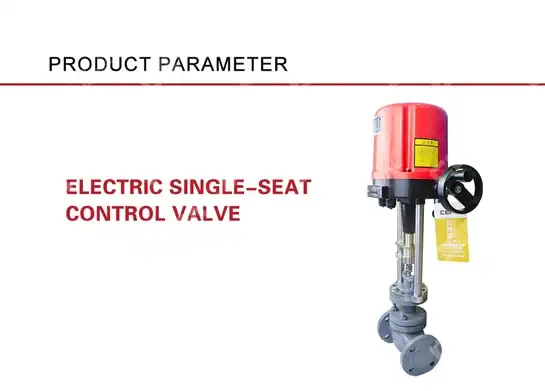Cryogenic Flow Control: Mastering the Challenges of Low-Temperature Fluids
When industrial facilities face equipment failures during cryogenic operations, the consequences can be catastrophic. Imagine a liquefied natural gas terminal where flow control systems fail at -162°C, resulting in massive product loss and safety hazards. This scenario highlights the critical importance of mastering Cryogenic Flow Control in extreme low-temperature environments. Understanding the unique challenges of handling fluids at temperatures approaching absolute zero is essential for industries ranging from aerospace to energy production. This comprehensive guide explores the complexities, solutions, and best practices for achieving reliable cryogenic flow control systems that ensure operational safety and efficiency.
Understanding the Fundamentals of Cryogenic Flow Control Systems
The science behind Cryogenic Flow Control involves managing fluid behavior at temperatures typically below -150°C (-238°F), where conventional materials and control mechanisms often fail. At these extreme temperatures, fluids exhibit unique thermodynamic properties that dramatically differ from their behavior at ambient conditions. The density variations, phase changes, and heat transfer characteristics of cryogenic fluids create complex challenges that require specialized engineering solutions. Traditional flow control equipment becomes inadequate when dealing with cryogenic applications due to material brittleness, thermal contraction, and the formation of ice crystals that can obstruct flow paths. The molecular behavior of gases and liquids at cryogenic temperatures creates additional complexities, including rapid vaporization when exposed to higher temperatures and the potential for thermal shock in system components. Understanding these fundamental principles is crucial for designing effective Cryogenic Flow Control systems that maintain performance reliability under extreme operating conditions.
-
Material Science in Cryogenic Applications
Material selection represents one of the most critical aspects of cryogenic flow control design. Standard steel and polymer materials become brittle and prone to fracture when exposed to extremely low temperatures. Specialized materials such as stainless steel 316L, Inconel, and specific aluminum alloys maintain their mechanical properties at cryogenic temperatures. These materials undergo rigorous testing to ensure they can withstand thermal cycling, maintain seal integrity, and resist corrosion in cryogenic environments. The thermal expansion and contraction coefficients of different materials must be carefully matched to prevent stress concentrations that could lead to component failure. Advanced composite materials and specialized coatings are increasingly being utilized to enhance the performance of Cryogenic Flow Control systems while reducing weight and improving thermal insulation properties.
-
Thermodynamic Considerations

The thermodynamic behavior of cryogenic fluids presents unique challenges for flow control systems. Rapid phase transitions can occur with minimal temperature changes, creating pressure spikes and flow instabilities. The Joule-Thomson effect becomes more pronounced at low temperatures, causing temperature changes during pressure reduction that can affect flow characteristics and system performance. Heat leak into cryogenic systems can cause significant operational problems, including increased boil-off rates and pressure buildup. Effective Cryogenic Flow Control systems must incorporate thermal management strategies, including advanced insulation techniques and heat exchanger designs that minimize unwanted heat transfer while maintaining precise flow control capabilities.
Advanced Technologies for Low-Temperature Flow Management
Modern Cryogenic Flow Control systems incorporate cutting-edge technologies designed specifically for extreme low-temperature applications. Advanced sensor technologies, including fiber optic temperature sensors and specialized pressure transducers, provide real-time monitoring capabilities that are essential for safe and efficient cryogenic operations. These sensors must maintain accuracy and reliability while operating in environments where traditional electronic components would fail. Smart valve technologies with integrated control systems offer precise flow regulation while providing diagnostic capabilities that enable predictive maintenance strategies. These systems utilize advanced materials and design features such as extended stems that isolate the actuator from the cryogenic environment, specialized packing arrangements that maintain seal integrity, and thermal barriers that prevent heat transfer to sensitive components.
-
Electronic Control Systems and Automation
The integration of advanced electronic control systems in Cryogenic Flow Control applications requires specialized design considerations. Control electronics must be isolated from the cryogenic environment while maintaining reliable communication with field devices. Fiber optic communication systems are increasingly being utilized due to their immunity to electromagnetic interference and ability to operate reliably in extreme temperature environments. Advanced control algorithms specifically designed for cryogenic applications account for the unique fluid properties and system dynamics associated with low-temperature operations. These systems incorporate predictive control strategies that anticipate system behavior and make proactive adjustments to maintain stable flow conditions. Machine learning algorithms are being integrated to optimize system performance and predict maintenance requirements based on operational patterns and historical data.
-
Flow Measurement Technologies
Accurate flow measurement in cryogenic applications presents significant technical challenges due to the unique properties of low-temperature fluids. Traditional flow measurement technologies often require modification or complete redesign to function reliably in cryogenic environments. Ultrasonic flow meters designed for cryogenic service utilize specialized transducers and signal processing algorithms that account for the acoustic properties of cryogenic fluids. Coriolis mass flow meters offer high accuracy for cryogenic applications but require specialized designs to handle the extreme temperature conditions and potential phase changes. These meters incorporate advanced materials and thermal management systems to maintain measurement accuracy while withstanding the thermal stresses associated with cryogenic operations. The calibration and validation of Cryogenic Flow Control measurement systems require specialized facilities and procedures that account for the unique operating conditions.
Industry Applications and Specialized Requirements
The application of Cryogenic Flow Control systems spans multiple industries, each with unique requirements and operational challenges. In the liquefied natural gas industry, these systems must handle large volumes of fluid at extremely low temperatures while maintaining precise flow control for loading, unloading, and storage operations. The aerospace industry requires lightweight, highly reliable cryogenic flow control systems for rocket propulsion applications where failure is not an option. Industrial gas production and distribution facilities rely on Cryogenic Flow Control systems for the efficient handling of nitrogen, oxygen, argon, and other industrial gases. These applications require systems capable of handling frequent thermal cycling and varying flow rates while maintaining consistent performance over extended operating periods. The medical and pharmaceutical industries utilize cryogenic flow control systems for specialized applications including cryopreservation and specialized manufacturing processes.
-
Energy Sector Applications
The energy sector represents one of the largest markets for Cryogenic Flow Control systems, with applications ranging from liquefied natural gas terminals to hydrogen storage and distribution facilities. These applications require systems capable of handling large flow rates while maintaining precise control over temperature and pressure conditions. Safety considerations are paramount in these applications, with multiple redundant control systems and emergency shutdown capabilities built into the overall system design. Power generation facilities utilizing cryogenic energy storage systems require specialized flow control equipment capable of rapid response times and high cycle efficiency. These systems must be designed to handle frequent start-stop operations while maintaining long-term reliability and performance. The integration of Cryogenic Flow Control systems with overall plant control systems requires sophisticated communication and control strategies that ensure seamless operation and optimization of overall plant efficiency.
-
Aerospace and Research Applications
Aerospace applications represent some of the most demanding requirements for Cryogenic Flow Control systems. Rocket propulsion systems require precise control of cryogenic propellants such as liquid oxygen and liquid hydrogen, where performance and reliability are critical for mission success. These systems must operate reliably in the harsh environment of space while providing precise flow control over a wide range of operating conditions. Research facilities utilizing cryogenic systems for scientific experiments require Cryogenic Flow Control systems with exceptional precision and stability. These applications often involve unique fluids and operating conditions that require custom-designed control systems. The development of quantum computing systems and superconducting technologies creates new demands for ultra-precise cryogenic flow control capabilities that push the boundaries of current technology.
Design Principles and Engineering Solutions

Effective Cryogenic Flow Control system design requires a comprehensive understanding of the unique challenges associated with low-temperature operations. Design principles must account for thermal management, material selection, system dynamics, and safety considerations that are specific to cryogenic applications. The integration of multiple control technologies and subsystems requires careful system engineering to ensure optimal performance and reliability. System redundancy and fail-safe design principles are essential for critical cryogenic applications where system failure could result in significant safety hazards or economic losses. Emergency shutdown systems must be designed to operate reliably under all operating conditions, including scenarios where primary control systems have failed. The design of Cryogenic Flow Control systems must also consider maintenance requirements and accessibility for service personnel working in potentially hazardous environments.
-
Thermal Management Strategies
Effective thermal management is crucial for reliable Cryogenic Flow Control system operation. Advanced insulation systems, including vacuum-insulated piping and specialized vapor barriers, minimize heat leak into cryogenic systems while maintaining structural integrity. Heat exchanger designs must optimize thermal efficiency while minimizing pressure losses that could affect flow control performance. Active thermal management systems utilizing controlled heat input or removal can be employed to maintain optimal operating temperatures for critical system components. These systems must be carefully integrated with overall flow control strategies to prevent interference with primary control functions. The use of advanced computational fluid dynamics modeling enables engineers to optimize thermal management strategies and predict system performance under various operating conditions.
-
Safety and Reliability Considerations
Safety considerations in Cryogenic Flow Control system design encompass multiple aspects including material compatibility, pressure relief systems, and emergency response capabilities. The potential for rapid phase changes and pressure buildup requires sophisticated pressure relief and venting systems designed specifically for cryogenic applications. Personnel safety considerations include the design of systems that minimize the risk of exposure to cryogenic fluids and the associated hazards of extreme cold and potential asphyxiation. Reliability engineering principles must be applied throughout the design process to ensure systems meet required availability and performance targets. This includes the use of proven design practices, extensive testing and validation, and the implementation of condition monitoring systems that enable predictive maintenance strategies. The development of comprehensive maintenance procedures and training programs ensures that systems continue to operate reliably throughout their service life.
Conclusion
Cryogenic Flow Control represents a specialized field requiring advanced engineering solutions to overcome the unique challenges of extreme low-temperature operations. Success demands comprehensive understanding of material science, thermodynamics, and specialized control technologies that work together to provide reliable, safe, and efficient flow control capabilities.
Cooperate with CEPAI Group Co., LTD.
CEPAI Group Co., LTD. stands as a leading China Cryogenic Flow Control factory with over 15 years of expertise in specialized valve manufacturing and fluid control solutions. Established in 2009 with a registered capital of 200 million yuan, our company has earned recognition as a national high-tech enterprise and specialized small giant enterprise. Our 56,000 square meter facility houses the longest high-precision intelligent manufacturing production line in the Asia Pacific region, representing a 156 million yuan investment in advanced manufacturing capabilities.
As a premier China Cryogenic Flow Control supplier and China Cryogenic Flow Control manufacturer, we maintain comprehensive certifications including API, ISO, and CE standards, ensuring our products meet international quality requirements. Our expertise extends to emergency cut-off valves, regulating valves, and specialized flow control devices designed for extreme temperature applications. We serve major industry players including PetroChina, Sinopec, and CNOOC, demonstrating our capability as a trusted China Cryogenic Flow Control wholesale provider.
Looking for Cryogenic Flow Control for sale with competitive Cryogenic Flow Control price points? Our High Quality Cryogenic Flow Control solutions combine advanced materials, precision manufacturing, and rigorous testing to ensure optimal performance in the most demanding applications. Contact our technical experts at cepai@cepai.com to discuss your specific requirements and discover how our innovative solutions can enhance your cryogenic operations.
References
1. "Cryogenic Fluid Systems: Design and Operation" - Johnson, R.K., Thompson, M.A., Industrial Press, 2023
2. "Low Temperature Flow Control Technologies" - Zhang, L., Chen, W., Wang, S., International Journal of Cryogenic Engineering, 2024
3. "Materials Engineering for Extreme Temperature Applications" - Smith, D.B., Anderson, P.J., Materials Science and Engineering Review, 2023
4. "Safety Considerations in Cryogenic System Design" - Miller, K.R., Roberts, T.L., Process Safety and Environmental Protection, 2024

Get professional pre-sales technical consultation and valve selection services, customized solution services.

About CEPAI


